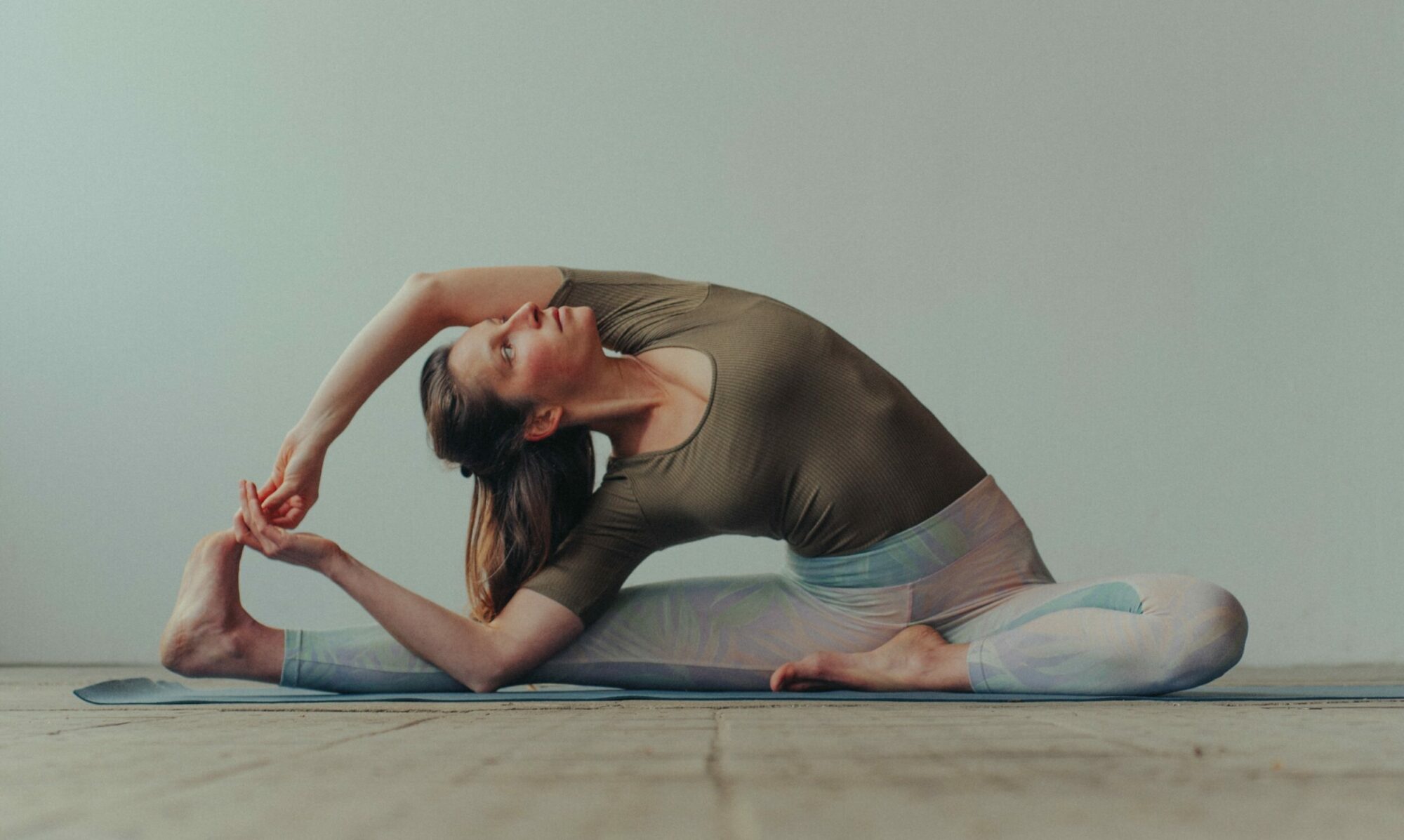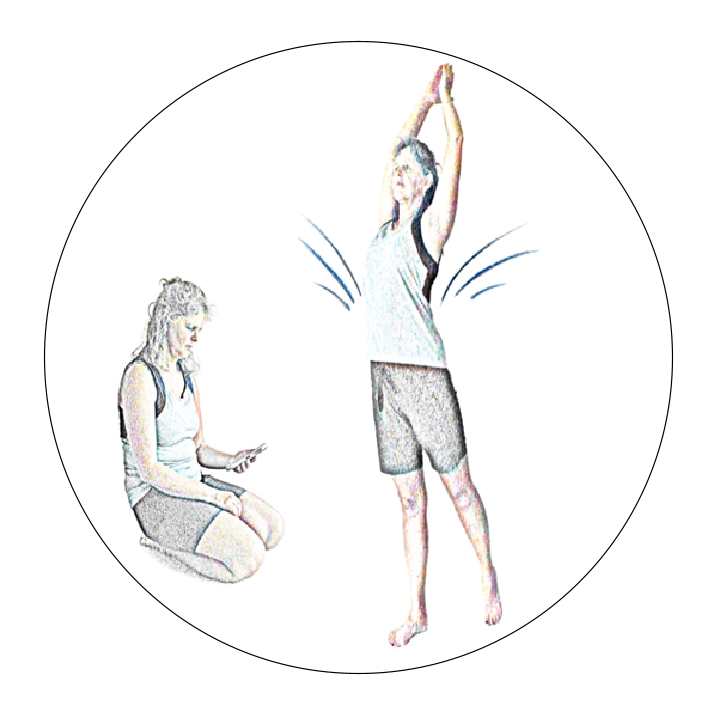An aspect of the Maṇipūra chakra
Who hasn’t experienced it? How often do we sit slumped over in everyday life? When working at a desk on long office days, when driving, on the sofa or using a cell phone. Even when standing, we often allow the middle of our torso to sink in. However, this part of the body is naturally an active area.
The solar plexus is a vegetative nerve plexus that has an emphasis in the middle of the spine with sympathetic nerve fibers (in contrast to the parasympathetic nerves, which contribute to relaxation). This is the logical starting point for active performance, which relates to the dynamization of the spinal column and motivates it to expand and lengthen.
However, this section of the body is significantly weakened and sunken in many people. If it is revitalized, the ribcage rises. More precisely: the ribcage rises, then the chest opens and the shoulders relax. The throat, neck and head become freer again, and facial senses such as sight and hearing become more alert again.
This posture produces a whole range of healing effects that are related to the revitalization of the Maṇipūra chakra . 1
Raising the ribcage has a space-creating effect
By raising the ribcage, the abdomen actually has more space for the abdominal organs. Essentially the digestive organs such as the stomach, spleen, liver, pancreas, kidneys, intestines and diaphragm. These can develop better in terms of space, decongest themselves and thus perform their functions better. Relieving the digestive organs contributes to a trouble-free metabolism, resulting in less stress and inflammation in the abdomen.
The large joints such as the hip, knee and ankle joints are also relieved by the lifting and thus removal of gravity. This is an aspect that can contribute to the prevention and treatment of osteoarthritis in these joints.
An interesting aspect is that a kind of suction effect is created on the venous blood system and lymphatic system. The reflux, e.g. in the case of water retention in the legs, is stimulated. Experience has shown that congested legs are relieved immediately and noticeably during the exercise.
An expanded space is created not only downwards to the abdominal cavity, but also to the sides of the flanks and upwards to the chest and lung cavity. The basis for this is certainly a relaxed, elastic diaphragm, which is fundamental for free and wide breathing.
The elevation of the ribcage continues upwards. The spine rises from the solar plexus to the middle of the thoracic spine, approximately between the shoulder blades. It lifts, opens and expands the rib cage, the ribs are raised and fanned out. The sternum and collarbones are also raised slightly. These conditions allow the lungs more room to expand. The diaphragm relaxes and breathing becomes wider and freer. The spine and intervertebral discs are relieved, they can nourish themselves better and thus prevent slipped discs .
An excellent effect can be observed on blood pressure. This is lowered or can be equalized. This is probably related to the development of wide and free breathing. This free breathing has a relaxing effect on the nerves and ultimately on the muscles and blood vessels. This is an aspect that can be taken into account when relieving high blood pressure .
Based on this image, it is easy to imagine how regenerative this stimulus can be in phases of physical and mental exhaustion. In fact, raising the ribcage can be recommended during and after illness in order to generally promote regeneration and recovery. 2
New order of tension in the body
As already mentioned, this active center at the level of the solar plexus opens up the chest and lung area, which is lifted and expands. The shoulders no longer have to be raised and can fall back in a relaxed manner, which also has a positive effect on relaxation in the neck and throat area. The hunched back is balanced as the straightening force from the solar plexus is guided up to between the shoulder blades and these naturally center themselves with a slight downward pull. Finally, the head is carried more freely again due to the overall straightening and the facial senses are once again in a more joyful and interested relationship with the outside world.
The person centers themselves towards their spine while at the same time being open to their surroundings. A good example of this is dance movement: While dancers actually center themselves in the middle of the body in all dance forms, the limbs move playfully out into space. The viewer gets the impression that the movement is almost spilling out into the space.
The simultaneity of tension and relaxation is a characteristic of the Maṇipūra chakra . In certain sections there is a contraction of the musculature and at the same time in other regions it relaxes. Typically, the spine straightens from the center and the shoulders can relax. This simultaneity of tension and relaxation in the body cannot be emphasized enough. It is the basis par excellence for all harmonious movements in everyday life, work and sport.
This new order in the tension relationships resolves some back pain caused by tense muscles. However, the solution does not primarily take place in the body, but in the awareness of the body and the demands of life. The awareness is trained and the reorganization of the tensions can be seen as a result.
by Angelika
- These connections were discussed during the study days in June 2025 at the School of Spirituality in Lundo
- It goes without saying that these are not therapeutic recommendations, but merely opinions that everyone can formulate for themselves.
Further contributions:
In the article The dynamics of the spine and the resilience in the body, the value of the active center at the level of the solar plexus has already been pointed out. The following article deals with the question of how the Maṇipūra chakra can be related to the development of consciousness: The Maṇipūra chakra and the experience of vastness

